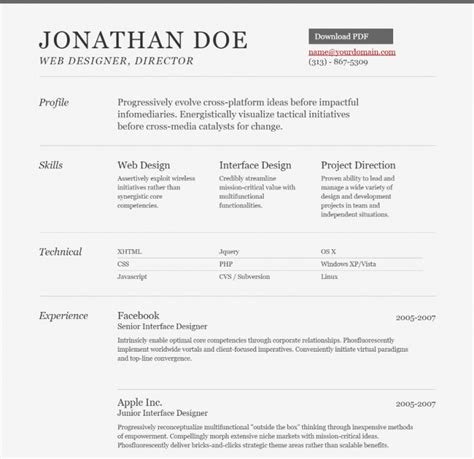Learn HTML structure, resume sections, & CSS styling with expert tips. Perfect for beginners. Boost your SEO skills now.Are you looking to create a standout resume that will impress potential employers and showcase your skills and experience in a visually appealing way? Look no further than HTML and CSS to help you achieve just that. In this comprehensive guide, we will walk you through the process of creating a professional resume template using HTML and CSS.
First, we’ll start by helping you understand the basics of HTML and how it can be used to structure the content of your resume. Then, we’ll show you how to create a basic structure for your resume using HTML tags. Next, we’ll dive into adding different resume sections, such as your contact information, work experience, education, and skills. Finally, we’ll explore how to style your resume using CSS to make it visually appealing and easy to read. By the end of this guide, you’ll have all the tools you need to create a unique and impressive resume template using HTML and CSS. Let’s get started!
Understanding HTML
The title of the blog post: Understanding HTML
HTML, which stands for HyperText Markup Language, is the standard language used to create and design websites. It is the foundation upon which all web pages are built, providing the structure and layout of a webpage. Understanding HTML is essential for anyone who wants to learn how to create and customize their own website.
When creating a webpage, it is important to start with a basic HTML structure. This consists of the declaration, the element, the element and the element. Each of these elements serves a specific purpose and are vital for creating a well-structured web page.
In addition to providing structure, HTML also allows you to add various sections to your resume. These can include your contact information, work experience, education, skills, and any additional information you want to include. By utilizing HTML tags such as and , you can effectively organize and separate each section of your resume.
Creating a Basic Structure
Creating a Basic Structure
Understanding HTML: HTML stands for HyperText Markup Language, which is the standard language used to create web pages. It is the foundation of every webpage on the internet. Understanding HTML is essential for anyone looking to create their own website or webpage. It is a markup language that defines the structure and layout of a web page using various tags and attributes.
Creating a Basic Structure: When creating a webpage, it is important to start with a basic structure. This includes the DOCTYPE declaration, which specifies the version of HTML being used, the html element, which encloses all the content on the page, the head element, which contains meta information about the page, and the body element, which contains the visible content of the page. After the basic structure is in place, other elements and tags can be added to further define the layout and content of the webpage.
Styling with CSS: Once the basic structure of the webpage is created using HTML, it can be further enhanced and styled using CSS (Cascading Style Sheets). CSS is used to control the presentation and layout of the content on the webpage, including fonts, colors, and spacing. By linking CSS to the HTML document, the appearance of the webpage can be customized to create a unique and visually appealing design.
Adding Resume Sections
Adding Resume Sections
In creating a resume template in HTML, it is important to understand the structure and organization of the document. The basic structure of an HTML document includes the <!DOCTYPE html> declaration, <html> element, <head> element, and <body> element. These elements provide the framework for adding content and styling to the document.
Once the basic structure is in place, the next step is to add resume sections such as contact information, education, work experience, skills, and references. Each section can be added using <div> elements and styled accordingly using CSS. For example, the contact information section can be added within a <div> with a unique ID, making it easier to apply specific styles to that section.
In addition to adding the resume sections, it is important to consider accessibility and mobile responsiveness. Using semantic HTML elements such as <header>, <main>, <section>, and <footer> can improve the accessibility of the document, making it easier for screen readers to interpret the content. Using media queries and responsive design techniques can also ensure that the resume template is optimized for viewing on a variety of devices.
Styling with CSS
When it comes to creating a visually appealing and professional-looking resume, CSS is an essential tool. With CSS, you can control the appearance of your resume, including the layout, colors, fonts, and more. By styling your HTML elements with CSS, you can make your resume stand out and leave a lasting impression on potential employers.
One of the key aspects of styling with CSS is the use of selectors. Selectors allow you to target specific HTML elements and apply styling to them. This can include anything from changing the font size and color to adjusting the padding and margins of elements. By using selectors effectively, you can create a cohesive and visually appealing design for your resume.
In addition to selectors, CSS also allows you to use properties and values to control the appearance of your resume. This includes setting the background color, adjusting the positioning of elements, and even creating animations and transitions to add a dynamic touch to your resume. With CSS, the possibilities for styling your resume are virtually endless, allowing you to tailor the design to best represent your skills and experience.
